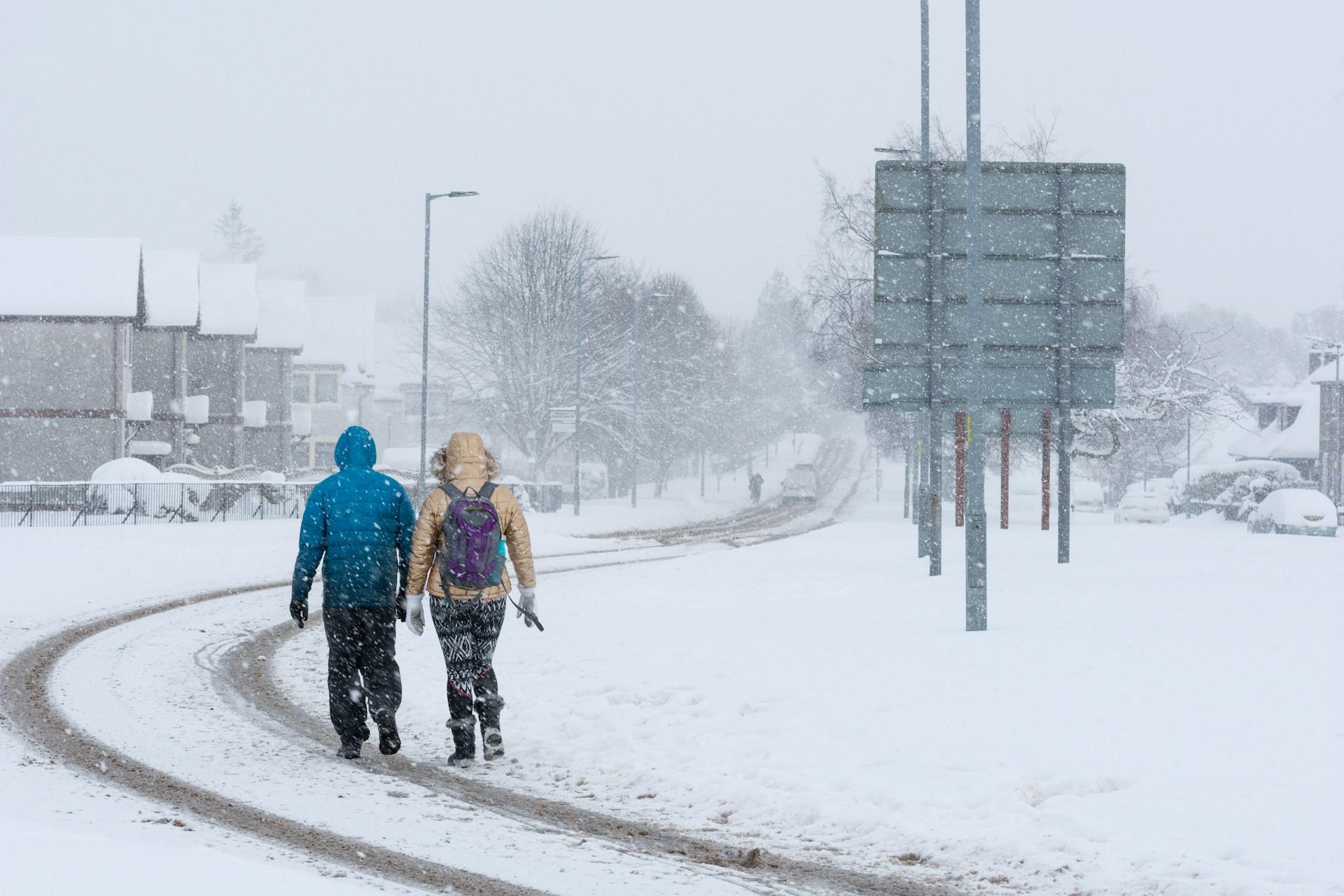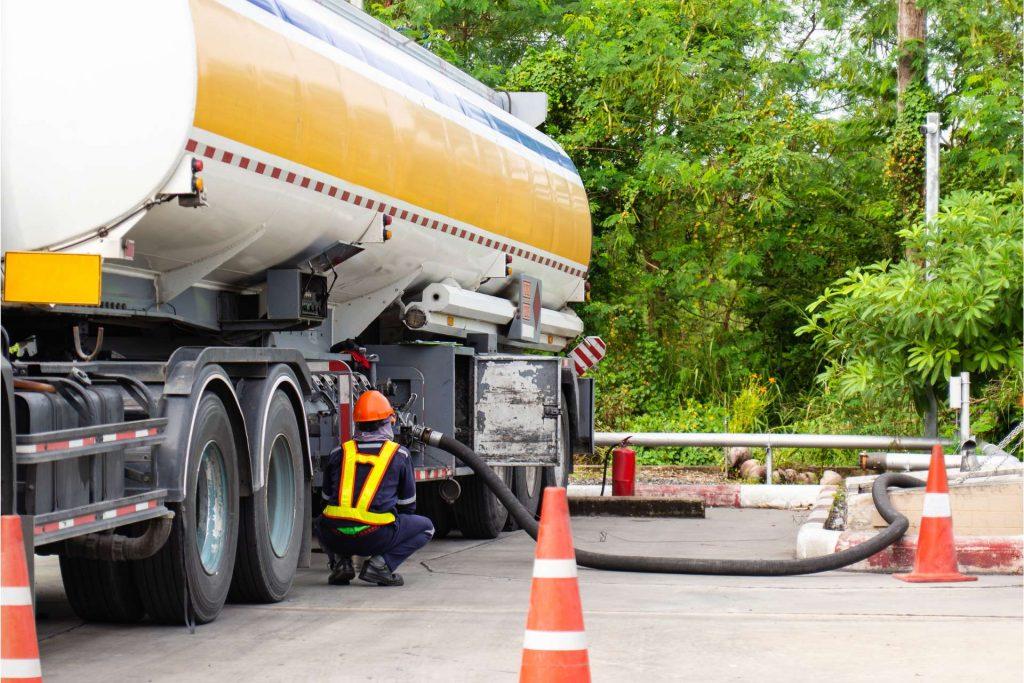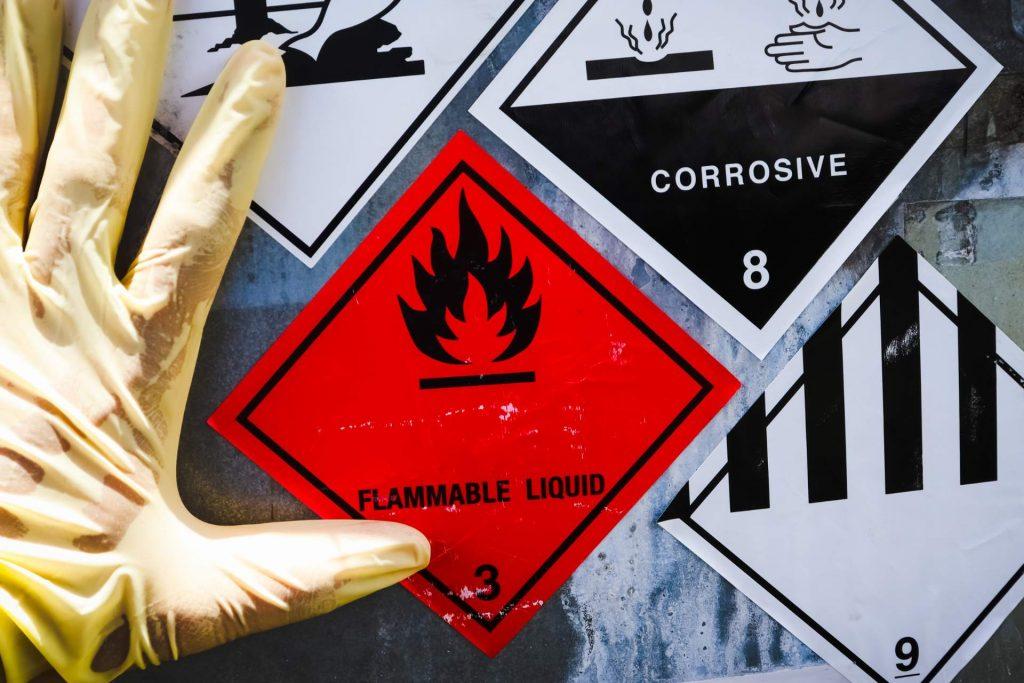22nd January 2024
Health And Safety In Winter Weather

Health and safety in winter weather should be a key consideration for all businesses. Slip and trip accidents increase during the autumn and winter seasons for a number of reasons. There is less daylight; leaves fall onto paths and become wet and slippery; and cold weather spells cause ice and snow to build up on paths.
This article highlights some effective actions that employers can take to reduce the risk of slips or trips and subsequent personal injury claims arising.
Health And Safety In Winter Weather
In preparing for the arrival of winter weather each year, the starting point should be to conduct a risk assessment for your business and surrounding areas.
Chris Hall, Partner at Lighthouse Risk Services said:
“Under the Management of Health and Safety at Work Regulations 1999, it is a legal requirement to conduct a risk assessment that includes identifying reasonable measures to mitigate hazards if you’re an employer, your business activity is mentioned within the regulations, or if your work presents a risk to others.
“Your risk assessment should include:
- A list of identified potential risks to employees and visitors to your business.
- An assessment of the likelihood that an identified risk will cause an accident.
- Identifying what actions are needed to reduce the likelihood of an accident and taking action.
“If your business employs five or more staff, the risk assessment must be recorded in writing. It’s also worth noting that any manual duties outlined in the risk assessment as remedial actions should also be risk assessed.”
Identify Hazards Inside And Outside Your Business
Areas inside and outside your business need to be considered as part of your risk assessment. These may include:
- Your company car park and its access road
- Pavements and pathways around your business
- Any potential shortcuts across landscaped or grassy areas
- Sloped areas
- Areas that are in the shade, wet or prone to flooding
- Any poorly lit corridors or rooms
- Colder working environments
- Wet and slippery floors in corridors and at the entrance to your building.
Annual Preparation Tasks
Each year it’s important to tackle any maintenance tasks that could impact the health and safety of your employees and visitors to your business.
First of all, fit in any external maintenance tasks that you may have been putting off. Leaving them until the cold weather arrives and you’ll be increasing your employees’ risk of injury by having them work in inclement weather.
Some considerations may include:
- Increasing maintenance spend to combat the increased risk of slips and falls. Paths and walkways should be cleaned and cleared of debris. You may need increased cleaning resources to combat wet floors, or to clean rails and surfaces to prevent the spread of illness.
- Plan your gutter cleaning as soon as the leaves have fallen. This will reduce icy patches on paths where water may have overflowed.
- Have a competent person examine any mature trees on your property to mitigate the risk of trees or branches falling in inclement weather. 5-6 people are killed each year in the UK from falling trees, and although this has a low incidence, it is still your legal responsibility to manage the risks.
- Finalise your snow and ice plan by using a safe system of work documents and pull together the materials and equipment needed to deliver it. We will cover the legalities of gritting and your responsibilities when clearing snow and ice below.
- Check you have floor mats to absorb excess water from footwear and coats.
- Ensure any company vehicles are ready for the cold weather
- Top up the antifreeze and check brake fluid.
- Check the battery
- Check your tyres
- Have essentials to hand:
- De-icer
- Shovel
- Jump leads
- Torch
- First aid kit
- Carpet or sack for getting out of snow
- Blankets
- Dry change of clothes
- Bottled water
- Emergency food supplies
- hone power bank
Areas To Consider
Lighting
When conducting your risk assessment, ask yourself if there is enough lighting around your workplace for you and your staff to be able to see and avoid hazards that might be on the ground?
You could also ask your employees for their thoughts, or you measure the lux levels with a hand-held light meter.
It is important to do this both inside and outside of the workplace, as the effect of light changes during the day.
If you can’t see hazards on the ground you will need to improve the lighting, for example, by installing new or additional lights, changing the bulbs, or improving the lighting controls, e.g. lights triggered by movement rather than someone having to flick a switch.
Whilst you’re looking at the lighting around your premises, have a look at the weather seals on junction boxes and lighting units to make sure they are in good order.
Heating
Whilst there is no legal limit to temperature, the HSE recommends a minimum of 16C, or 13C for strenuous work.
As the temperature drops, you can take practical steps to keep people as comfortable as possible when working in the cold:
- Provide adequate workplace heating to ensure work areas are warm enough when they are occupied. Rent portable heaters if the heating isn’t sufficient.
- Design processes that minimise exposure to cold areas and cold products.
- Reduce draughts while still keeping adequate ventilation
- Provide insulating floor coverings or special footwear when workers have to stand for long periods on cold floors.
- Provide appropriate protective clothing for cold environments
- You can also change work systems:
- Limit exposure by introducing systems such as flexible working patterns or job rotation
- Provide enough breaks to allow workers to get hot drinks or warm up in heated areas
Foliage & Wet Leaves
Wet leaves and foliage can create risks in winter. They do this in two ways. First, they hide any potential hazards on walkways, or they create a slip risk when wet.
Practical steps may include:
- Have a plan in place to regularly clear wet leaves and foliage from your premises, especially on high-traffic walkways.
- Hire additional resources to ensure this is done if you’re not able to keep up to it with your current staffing levels.
- You might even consider removing the offending bushes or trees altogether if this is practical.
Wet Weather
With the onset of wet weather comes a whole host of health and safety risks to minimise. Practical steps to reduce risks associated with wet weather may include:
- Use designated walkways. Block off any potential shortcuts over grass or sloped areas that may be extra slippery in wet conditions. Consider converting existing shortcuts into gravelled or tarmacked paths.
- Fit slip resistant materials where possible for walkways, decks and steps. If existing areas aren’t slip-resistant, you may make the decision to upgrade.
- In reception areas, use large mats to absorb excess water that may make it slippy. Again, you may make a decision to change the flooring material to something non-slip.
- Utilise signage to advise employees and visitors to be extra vigilant where wet flooring may be a risk.
- In dealing with rainwater:
- When fitting external paved areas ensure that the material used will be slip-resistant when wet.
- On new sites, before laying paths, think about how pedestrians are likely to move around the site. Putting the path in the right place from the start may save you money in the long term.
- Regularly check drainage standards on site, check for blocked storm drains, pooling water etc
- Many slip accidents happen at building entrances as people entering the building are rushing to get in from the rain; perhaps folding an umbrella away or taking down their hood. Fitting canopies of a good size over building entrances and in the right position can help to prevent this.
Ice, Frost & Snow
When we think of health and safety risks in winter, we immediately think of snow and ice. The health and safety advice line receives many calls every year from clients about this issue, and with the onset of wintry weather, employers and organisations need to know where they stand when it comes to their health and safety obligations.
All occupiers of premises, whether individuals or businesses have a duty to take reasonable steps to ensure the safety of all visitors. This includes the removal of ice and snow from walkways and private car parks and the Health and Safety Executive has recommended such problems should be “promptly tackled”. To reduce the risk of slips on ice, frost or snow, you need to assess the risk and put in a system to manage it.
Possible actions to take may include:
- Occupiers of premises are expected to monitor the weather when temperatures drop, identify the potential problem areas and have procedures in place to tackle them. These may include:
- Building entrances
- Car parks
- Pedestrian walkways
- Shortcuts
- Sloped areas
- Areas in the shade or constantly wet
- Forewarn employees of the forecasted conditions through the use of group emails and signage. Lack of knowledge or a delay in taking action will not be a defence against a claim.
- Speaking of signage, placing warning signs in icy or snowy conditions is unlikely to be viewed as taking enough ‘reasonable steps’ to ensure the safety of visitors.
- Prevent ice from forming: Employers must keep their employees safe, as far as reasonably possible, from the risk of slipping on ice and snow in car parks, pathways and other areas frequented by employees where snow or ice may pose such a risk. Any outside areas which are used by employees must be gritted or salted as far as reasonably possible.
Gritting before the ice can form
Gritting should be carried out when frost, ice or snow is forecast or when walkways are likely to be damp or wet and the floor temperatures are at, or below freezing. The best times are early in the evening before the frost settles and/or early in the morning before employees arrive.
The most common method used to de-ice floors is gritting as it is relatively cheap, quick to apply and easy to spread. Rock salt is the most commonly used ‘grit’ and it is also the substance used on public roads by the highways authority.
If you grit when it is raining heavily the salt will be washed away, causing a problem if the rain then turns to snow. Compacted snow, which turns to ice, is difficult to treat effectively with grit. Be aware that ‘dawn frost’ can occur on dry surfaces, when early morning dew forms and freezes on impact with the cold surface. It can be difficult to predict when or where this condition will occur.
It’s rarely possible to ensure you have clear paving or tarmac at all times, so have barriers, cones and signs available to direct pedestrians and drivers away from those parts of the site which have not yet been made safe and towards less slippery walkways. If warning cones are in use, remember to remove them once the hazard has passed or they will eventually be ignored.
Cleaning
During winter months, additional cleaning should be considered. If you don’t have the resources internally, consider hiring someone to take care of this.
Absorbent mats at entrances will only absorb so much water. On surfaces with the potential to become slippery, regular mopping of the floor will prevent water from pooling and making the floor slippy.
Regularly cleaning and sanitising surfaces will help to prevent the spread of germs and illnesses.
Carry Out Regular Checks
Appointing a competent person from your staff or your site supervisor to be responsible for ensuring checks are taking place is good practice. Regular checks of the following and taking action will help to ensure you’re doing everything reasonable to keep your employees and visitors safe:
- Check that lighting, power, and heating systems are working properly inside
- Keep an eye on pathways and other areas outside to make sure they’re clear of ice, snow, and leaves
For any further advice on health and safety in winter weather and your responsibilities, contact us today.
The competent person role does not have to be fulfilled internally within every company. You can, therefore, outsource the appointment to a contractor or consultancy with the necessary qualifications and experience.Appoint Lighthouse As Your Health & Safety Competent Person



